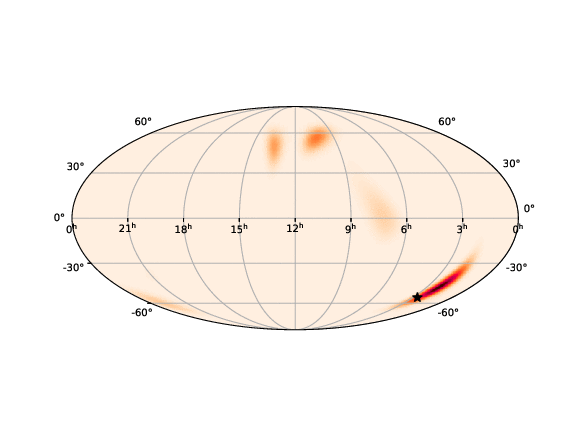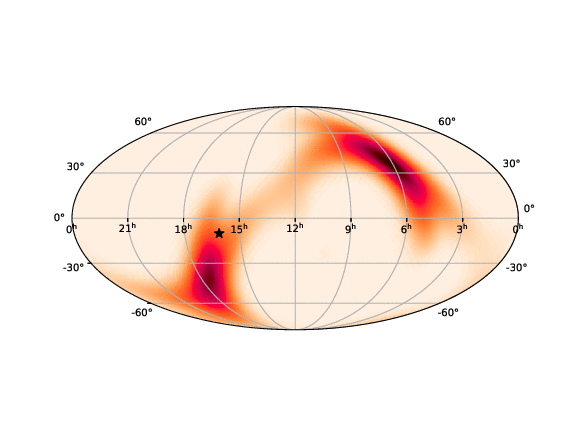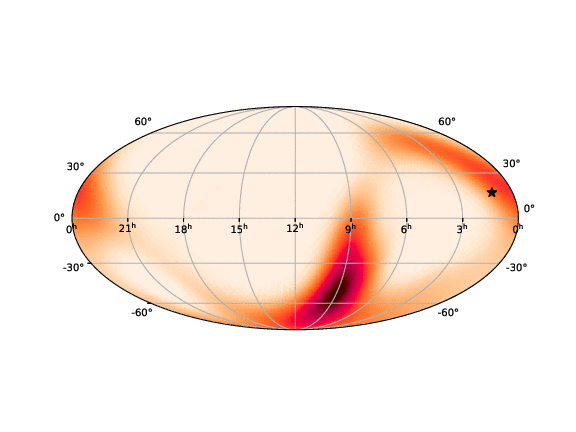✨Early-Warning Alerts¶
BNS mergers spend several minutes in band of the Advanced ground-based gravitational-wave detectors. For some loud and nearby BNS mergers, it is possible to accumulate enough SNR and detect them several tens of seconds before merger. During O3, automated public alerts for CBC events have been sent within as little as 2 minutes after merger. In O4, we will be deploying search pipelines that can in principle detect BNS events before merger.
Since it is generally assumed that detectable electromagnetic (or neutrino) emission starts shortly after merger, a pre-merger gravitational-wave detection would provide early warning of an impending electromagnetic transient and might make it possible for automated follow-up facilities to capture any prompt emission from the merger environment, the jet, and other unknown activity.
We had previously conducted a trial early warning public alert infrastructure in June 2020 replaying an 8-day period of archival LIGO data from O3. Results from this study were published in [1]. This study demonstrated that in principle it is possible to sent out GCN Notices in advance of a BNS merger. Based on the current expect BNS merger rate, we expect O(1) event per year to be detected before merger in O4.
We have commissioned capability to produce and distribute early warning gravitational-wave alerts up to tens of seconds before merger. We have also reduced the latency of ordinary post-merger alerts to within tens of seconds after merger.
Subscribe to Early-Warning Alerts¶
Early warning alerts are publicly distributed as Notices just like ordinary gravitational-wave alerts (see the Alert Contents section). They have exactly the same format and content as a Preliminary Notice. In particular, early warning GCN Notices have significance estimates, sky localizations, and source classifications. Also, like Preliminary GCN Notices, Early Warning Notices are sent prior to vetting by humans, and are not accompanied by a GCN Circular.
Early warning GCN Notices are differentiated from ordinary GCN Notices by the
new LVC_EARLY_WARNING GCN Notice type. If you are receiving GCN Notices via
an anonymous VOEvent connection and you are using the Python sample code from
the VOEvent Notices via GCN Classic section, then all you have to do is add
the notice type to your GCN handler:
import gcn
@gcn.handlers.include_notice_types(
gcn.notice_types.LVC_EARLY_WARNING, # <-- new notice type here
gcn.notice_types.LVC_PRELIMINARY,
gcn.notice_types.LVC_INITIAL,
gcn.notice_types.LVC_UPDATE,
gcn.notice_types.LVC_RETRACTION)
def process_gcn(payload, root):
... # <-- put your code here
gcn.listen(handler=process_gcn)
(If you are using a non-anonymous GCN connection or one of the many other notice formats provided by GCN, then you will also need to submit a change to your GCN Notice subscription settings.)
Important
Since these early-warning events will arise from time-shifted and replayed
data and not live observations, the GCN notices will be flagged as test
events by setting the VOEvent role="test" attribute.
Detection Method¶
All of our CBC search pipelines (GstLAL [2], MBTA, PyCBC, and SPIIR) are participating in early-warning alerts. See the Online Pipelines section for details on these analyses. Localizations will be produced with BAYESTAR; see the Sky Localization and Parameter Estimation section for details.
BNS signals sweep up smoothly in frequency for a few minutes across the Advanced LIGO band. In that time, they may accumulate enough SNR to be detected before merger. A GW170817-like system with a total network SNR of 32 will already accumulate an SNR of 11 by the time the signal sweeps up to 30 Hz, about a minute before merger.
The time evolution of the gravitational-wave frequency and the cumulative SNR for a GW170817-like BNS system.¶
The early warning search is a matched-filter search that uses templates that have been truncated at a selection of end frequencies—or equivalently, cut off at a selection of times before merger.
Source Classification¶
The automated source classification and properties have not been trained or tested extensively for early warning alerts. However, the early warning analysis is only sensitive to BNS-mass mergers. As a result, the favored source class in early warning GCN Notices will always be either BNS or Terrestrial, with a 0% chance of NSBH or BBH. The HasNS and HasRemnant fields will always show 100%.
Localization¶
Sky localizations for early warning alerts are typically very coarse because the early warning analysis inherently does not make use of the full duration and bandwidth of the gravitational-wave signal. The localization improves slowly up until the last second before merger, and then converges rapidly in the last second.
The animations below taken from the data release [3] show the evolution of early-warning sky maps for three representative events with different SNR values. Note that this study assumed the detectors to be operating at their final design sensitivity.
Final SNR |
11 |
18 |
25 |
|---|---|---|---|
Distance |
250 Mpc |
210 Mpc |
160 Mpc |
Sky map (animated GIF) |
|||
Frequency |
Localization accuracy (90% credible area) |
||
29 Hz |
Not detected |
Not detected |
12000 deg2 |
32 Hz |
10000 deg2 |
||
38 Hz |
9200 deg2 |
8200 deg2 |
|
49 Hz |
2300 deg2 |
1000 deg2 |
730 deg2 |
56 Hz |
1000 deg2 |
700 deg2 |
250 deg2 |
1024 Hz |
10 deg2 |
31 deg2 |
5.4 deg2 |


